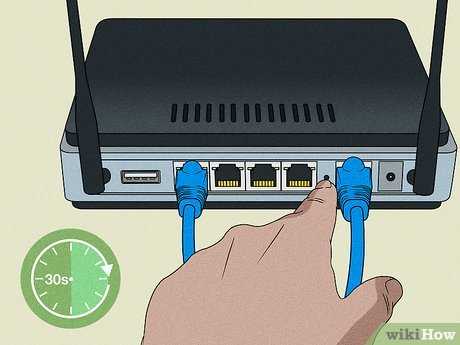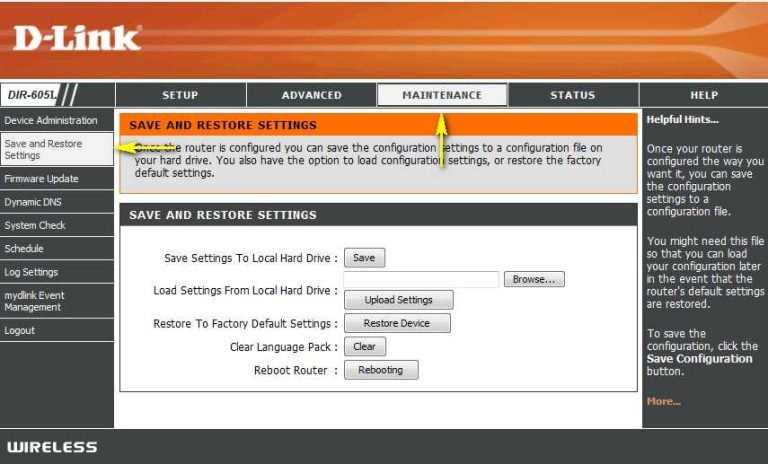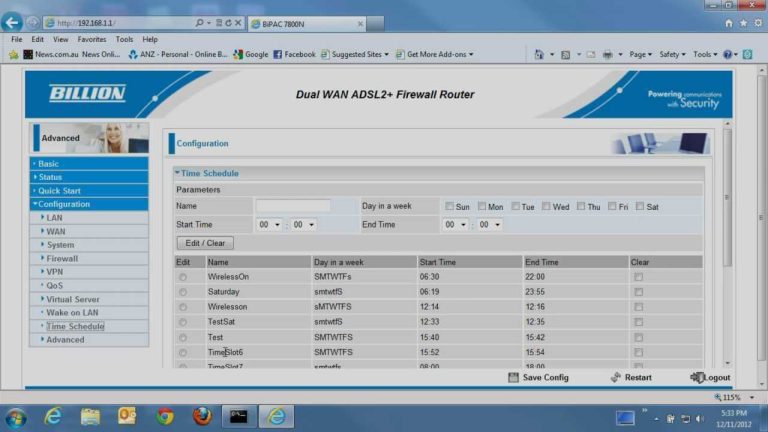If your router’s orange light is blinking, don’t panic—this is usually a sign of a connectivity issue that can often be fixed with a few simple steps. The blinking orange light generally indicates a problem with the internet connection or a firmware glitch, but it’s not a cause for alarm. To quickly fix this, you might just need to restart your router, check your cables, or update the firmware. In most cases, these straightforward solutions will get your internet back up and running smoothly.
A blinking orange light on your router typically points to a connectivity problem or a firmware issue. The fix involves basic troubleshooting like power cycling, checking connections, or updating the router’s software. With a little patience, you can resolve this blinking light and restore your internet connection in no time.
When the orange light on your router starts blinking, it can be frustrating, especially if you’re trying to work, stream, or browse the internet. This issue often stems from temporary glitches, loose cables, or outdated firmware. Thankfully, resolving it doesn’t usually require technical expertise. Start by unplugging your router, waiting a few seconds, and plugging it back in to reset the device. Ensure all cables are securely connected and check for service outages with your internet provider. If the problem persists, updating your router’s firmware can often fix bugs that cause the blinking orange light. By following these simple steps, you can usually fix the blinking orange light and get your internet connection back on track quickly and effortlessly.
Router Orange Light Blinking Fix: How to Resolve the Issue
If your router’s orange light is blinking, it can be confusing and frustrating. This blinking indicator often signals a problem with your internet connection or the device itself. Fortunately, there are several simple steps you can take to fix this issue and get your internet running smoothly again.
Understanding Why the Orange Light Blinks
The blinking orange light usually indicates an issue with the router’s connection or hardware. It may mean that your router is unable to establish a stable connection with your internet service provider (ISP). Sometimes, an orange blinking light can also suggest firmware problems or overheating.
Knowing what the blinking light signifies helps you troubleshoot effectively. Each router brand may have different indicator lights, but an orange blinking generally points to a connectivity or hardware error.
Common Causes for the Blinking Orange Light
- Internet Service Disruption: ISP outages or maintenance activities can cause the orange light to blink.
- Incorrect Router Setup: Improper configuration or recent changes can lead to connectivity issues.
- Weak Signal or Poor Wiring: Damaged cables or poor placement may disrupt the connection.
- Firmware Outdated: Outdated firmware can cause software glitches resulting in blinking lights.
- Overheating: Excess heat inside the router can impact its performance.
- Hardware Faults: Internal hardware failures may also cause blinking lights.
Basic Troubleshooting Steps for Fixing the Blinking Orange Light
1. Check Your Internet Connection
Before diving into complex fixes, verify if your ISP is experiencing an outage. Visit your provider’s website or contact customer support to confirm service status. If there is an outage, you’ll need to wait until it is resolved.
2. Power Cycle Your Router
Unplug your router from the power source. Wait for about 60 seconds to clear cached data and reset the device. Plug it back in and turn it on. This simple step often resolves temporary glitches.
3. Inspect Ethernet Cables and Connections
Ensure all cables are securely connected without damage. Replace any frayed or broken cables. Proper wiring is essential for maintaining stable internet connectivity.
Advanced Solutions to Resolve the Orange Blinking Light
4. Reset Your Router to Factory Settings
If basic steps don’t help, perform a factory reset. Usually, this involves pressing and holding a small reset button on the device for about 10 seconds. Remember, this will erase custom settings, so note your configuration beforehand.
5. Update Router Firmware
Log into your router’s admin panel via a web browser. Check the manufacturer’s website for the latest firmware update. Follow the instructions carefully to install updates, which can fix bugs and improve performance.
6. Change Wireless Channel and Frequency
Interference from nearby networks can cause connection issues. Adjust your router’s wireless channel from the admin panel. Switching between 2.4 GHz and 5 GHz bands can also help improve signal quality.
Additional Tips for Resolving the Orange Blinking Light
7. Check for Overheating
Ensure your router is placed in a well-ventilated area. Remove any objects blocking vents. If it feels excessively hot, turn it off and let it cool down for a while before restarting.
8. Test with a Different Power Source
Sometimes, power fluctuations can cause blinking lights. Plug your router into a different socket, preferably one connected to a surge protector. Avoid using extension cords if possible.
9. Contact Your Internet Service Provider
If none of the above steps work, reach out to your ISP support. They can run remote diagnostics or send a technician if necessary. Sometimes, the issue is beyond your control and requires professional intervention.
Additional Tools and Resources for Troubleshooting
- Router Manual: Provides specific indicator light definitions and reset instructions.
- ISP Support Website: Offers outage maps and troubleshooting guides.
- Firmware Download: For manual updates from your router manufacturer.
- Online Forums and Communities: Places to find solutions from other users facing similar issues.
Preventive Measures to Avoid Future Issues
- Regular Firmware Updates: Keep your router’s software up to date to prevent glitches.
- Proper Placement: Place your router in a central, open location away from obstructions.
- Secure Your Network: Use strong passwords to prevent unauthorized access that can disrupt service.
- Avoid Overheating: Keep the device in a cool, ventilated space.
- Use Quality Cables: Replace old or damaged wiring promptly.
Related Topics to Consider
Wired vs Wireless Connections
Using Ethernet cables can provide a more stable and faster connection compared to Wi-Fi. Consider switching to wired connections for important devices if your Wi-Fi keeps having issues.
Router Placement Tips
For optimal signal strength, place your router in a central, elevated location away from electronics and thick walls. This reduces interference and improves coverage.
Troubleshooting Internet Slowdowns
If your orange light blinks due to slow speeds, check for bandwidth-heavy applications or other devices consuming data. Restart your router regularly to refresh the connection.
Upgrading Your Router
If your device is outdated, consider upgrading to a newer model with better antennas and faster speeds. Newer routers often have enhanced features to prevent blinking errors.
Fixing a blinking orange light on your router doesn’t have to be complex. By following these step-by-step methods, you can identify the root cause and restore your internet connection quickly. Remember, regular maintenance and awareness of your network’s health can prevent many common issues.
Xfinity WiFi Box Blinking Orange – Quick Fix
Frequently Asked Questions
What should I do if my router’s orange light keeps blinking continuously?
If your router’s orange light blinks constantly, first disconnect the power supply and wait for about 30 seconds. Then, reconnect the power and check if the light stabilizes. Restarting the router often resolves minor glitches. If the issue persists, ensure all cables are properly connected and not damaged. Performing a factory reset can also reset settings that might be causing the problem, but remember to back up your configurations beforehand.
Could firmware issues lead to a blinking orange light on my router?
Yes, outdated or corrupted firmware can cause the orange light to blink. Check the manufacturer’s website for the latest firmware updates for your router model. Download and install any available updates following the provided instructions. Updating firmware helps fix bugs and improve overall device stability, which can resolve blinking orange light issues caused by software glitches.
How can network congestion affect my router’s orange blinking light?
Network congestion can sometimes trigger the blinking orange light if the router struggles to handle multiple devices or high data traffic. To reduce congestion, disconnect unused devices and limit bandwidth-heavy activities. You can also try resetting your router and optimizing your network settings. If congestion remains a problem, consider upgrading your internet plan or router to better accommodate your usage needs.
Is it possible that a hardware malfunction causes the blinking orange light?
Yes, hardware problems such as a faulty power supply, damaged ports, or overheating components can cause the orange light to blink. Inspect your device for physical damage and ensure it is in a well-ventilated area. If hardware issues are suspected, contacting technical support or replacing malfunctioning parts may be necessary to resolve the blinking light issue.
Can resetting the router fix the blinking orange light problem?
Resetting your router often resolves temporary issues that cause the orange light to blink. Use the reset button to restore the device to its factory settings, but keep in mind this will erase custom configurations. After resetting, reconfigure your settings and check if the orange light stabilizes. If the problem persists, further troubleshooting or professional assistance may be required.
Final Thoughts
The ‘router orange light blinking fix’ typically involves restarting your device or checking cable connections. Sometimes, updating firmware or resetting the router helps. If the issue persists, contacting your ISP ensures proper network setup. Addressing these steps quickly restores your connection efficiently.

I specialize in process engineering and system optimization. I enjoy writing guides that simplify troubleshooting and help improve efficiency in everyday tech use.






